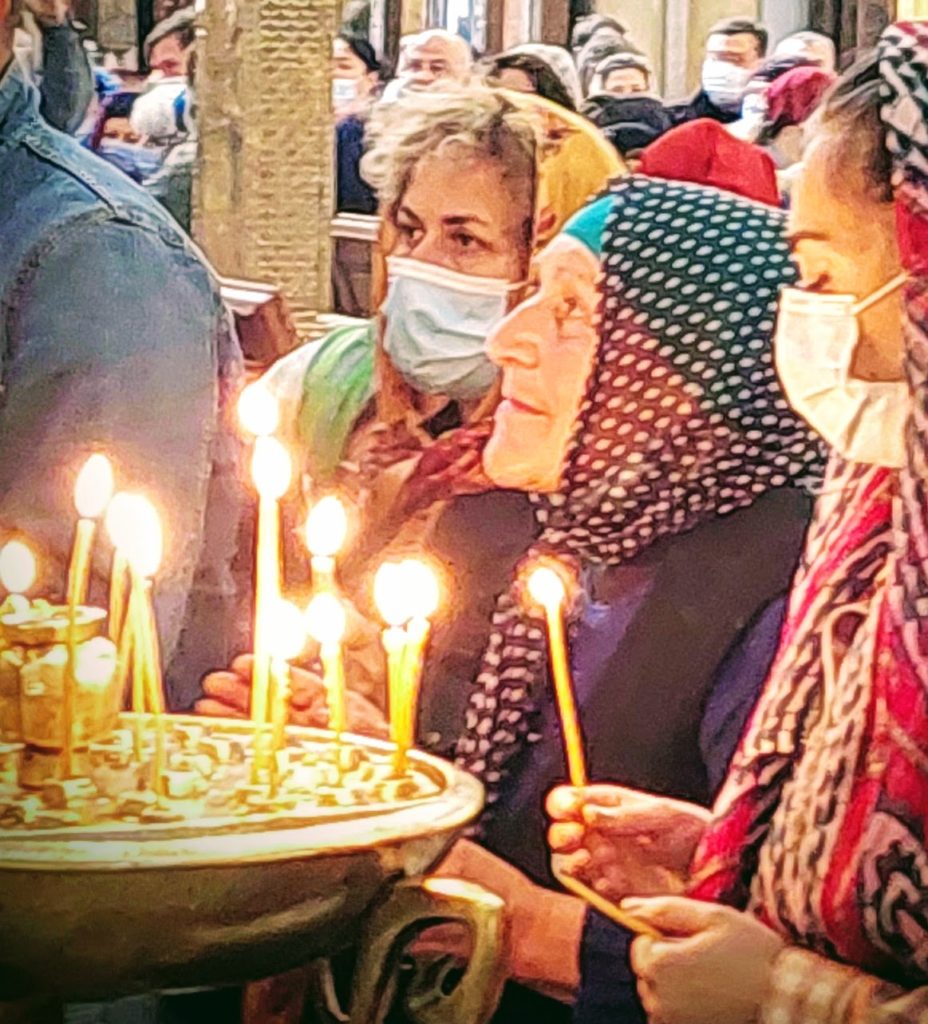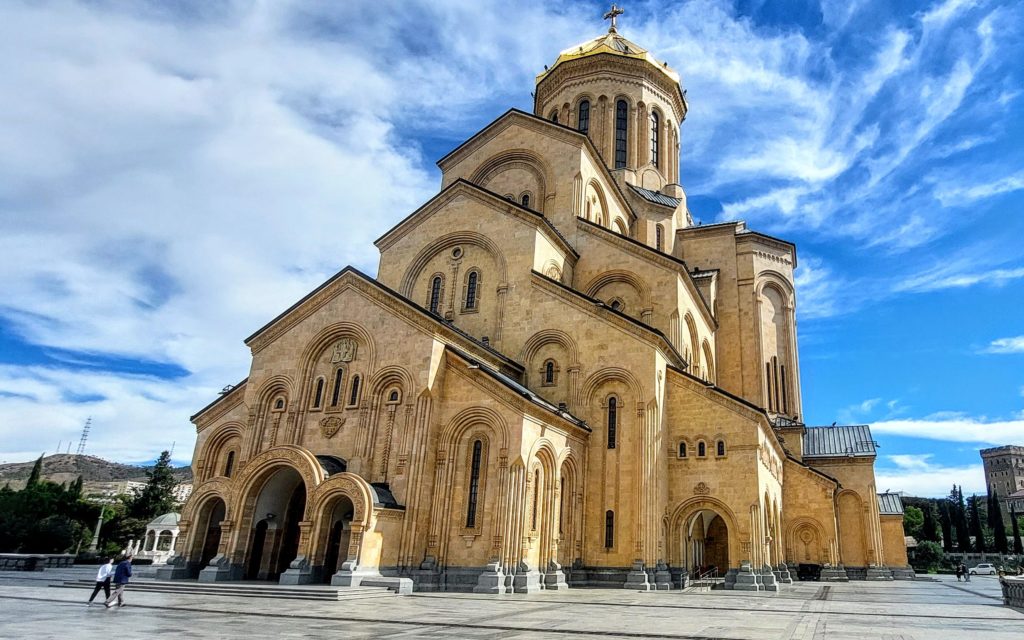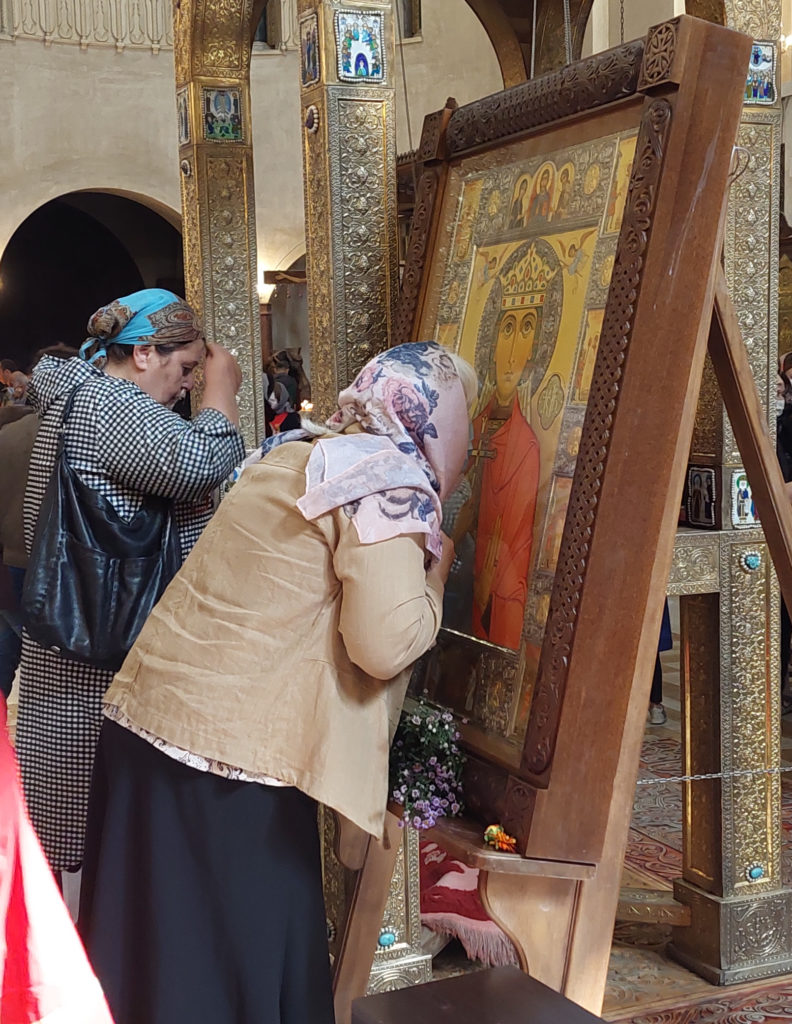
On Sunday I went to the impressive Holy Trinity Cathedral in Tbilisi, 11 a.m. mass, hoping to see and hear the renowned polyphonic cathedral choir.

This was after I’d searched online in vain for information on when exactly I might hear this remarkable choir perform, which I knew only by reputation and recognition of the rare technique they employed. I also couldn’t get anyone to answer the phone at the number I found for the Cathedral office.
I went to the Cathedral itself on Saturday and and drew blanks again. Few people there spoke English and those that did knew nothing about the choir.
My only hope then was to go back on Sunday and play it by ear, so to speak.
Shortly before 11 a.m. on Sunday, a friend of mine and I walked into the cathedral, known in Georgia also as Sameba, where there seemed to be no order at all to all that was going on.
A large crowd milled around on the floor, lighting long, thin votive candles, often dropping their Covid masks to kiss, touch and caress the elaborate depictions of saints on display.

Some knelt on the marble-tiled floor, others stood silently, reverently, reading from small books of scripture, seeming dazed in place by the sense of chaos surrounding the ceremony.
Priests in an array of colorful vestments paraded to and fro on the chancel, some swinging thuribles of incense, others appearing on the chancel for no discernible reason to my irreligious eye.
The floor of the spacious cathedral, lacking pews or chairs, was a kaleidoscopic assembly of solemn movement and color.
Sameba is reportedly the third tallest Eastern Orthodox cathedral in the world at 87.1 meters (286 ft), towering over the city of Tbilisi from a prominent hill in the historic Avlabari neighborhood. It was completed in 2004 after nine years of construction, at least partially on the site of a former Armenian cemetery.
But I had come not for architecture or salvation, but to see and hear the Holy Trinity Cathedral Choir, known for its polyphonic intonations, the remarkable ability to sing more than one tone at a time with a single voice. As an aficionado of traditional music, one who also appreciates the beauty and pageantry of religious ceremony, I am drawn to such unusual styles of ancient devotion.
As I entered and carefully shuffled my way across the crowded floor, I could hear the magnficent sound of the choir and craned my neck trying to locate the source of their saintly voices in the vastness of the cathedral’s nave.
I was utterly mystified for some time by their absence until finally realizing that the “choir” I was looking for in fact stood right before me! Just three men encircling a single microphone on the side of the chancel were producing the richness of voices I thought possible only by a much larger choir.

It was stunning to see, magnificent to hear, and almost impossible to believe.
But I had found what I’d come to hear, fortifying my deepest respect for the practitioners of this celestial art at its highest level of performance, adding a unique and wonderful musical experience to my nomadic world journey, moving onward again now in its sixth year.
Life is good if you let it be. Live it and enjoy.
Hi David,
What a cool experience. I’ve been dreaming of traveling to Georgia for some time now. And it’s these experiences and stories that make traveling that much more exciting. Thanks for sharing! 🙂
Thanks Jen, Georgia is beautiful. I would plan to visit as soon as possible, though, as it it may be on the verge of a tourism boom.
Hey Dave this is a great summary of an amazing experience! Thanks for taking me there. When I traveled with my kids to various sporting events I always made a point to stop in the Catholic Churches! There is so much to learn from churches…they tend to reflect the culture of the community. Libraries and churches are the unsung heroes of a community! Love this..thanks!
Glad you enjoyed it, Kathleen, and you’e right about churches/religion being an accurate reflection of culture and having a dominating influence.